Bringing Teachers to Boston Harbor
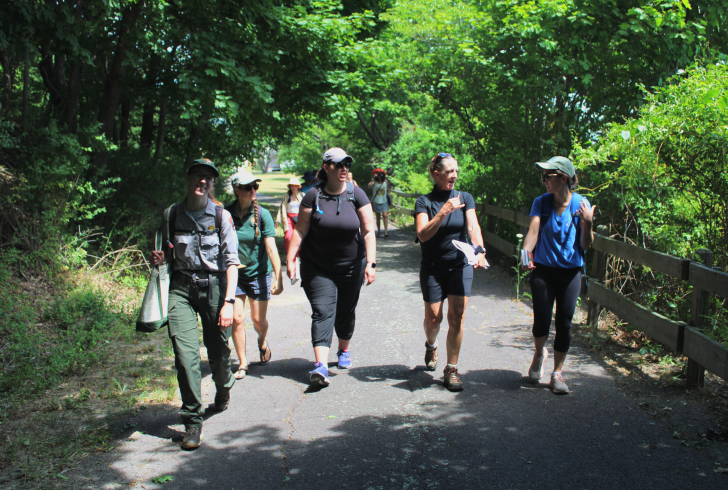

by Rebecca Shoer
Cabot Education & Community Engagement Program Manager
This summer, we were delighted to welcome eight Boston area teachers to the pilot Stone Living Lab Teacher Institute! This free, five-day institute brought teachers and speakers together to explore Boston Harbor through the lens of climate change, place-based learning, and citizen science*. In addition to learning and exploring the Harbor, teachers also began work on their capstone projects: a place-based lesson that they will implement in the coming academic year.
After planning and developing this brand-new program for a little over a year, Elisabeth Colby (NPS), Holly Rosa (Boston Public Schools), and I were thrilled to come together and co-facilitate this program. Our participants came from across the Boston area, including teachers from Quincy, Somerville, Marblehead, Braintree, and Boston Public Schools.
Our course focused on three central pillars: place-based learning, climate change, and citizen science. Read on to find out how we spent each day!
On our first day, the group gathered at the Commandant’s House in the Charlestown Navy Yard, a historic residence now used as an event and meeting space. This unique location (piano and chandelier included) was the perfect venue to jump-start a conversation on the power of place-based learning. Elisabeth introduced us to the six pillars of place-based learning: rigorous, real, empowering, collaborative, integrated, and grounded in place. We would return to these pillars at the end of each day, reflecting on how each played a role in our site visits.
That afternoon we braved the heat for a visit to Langone Park and Puopolo Playground, one of Boston’s first city parks redesigned to be climate resilient. We met with Julie Eaton-Ernst of Weston and Sampson and Cathy Baker-Eclipse from Boston Parks and Recreation, who presented about the design process and history of this park. Teachers got to try their hand at some hands-on design activities, and explored how the park’s design serves as a barrier against sea level rise and storm surge.
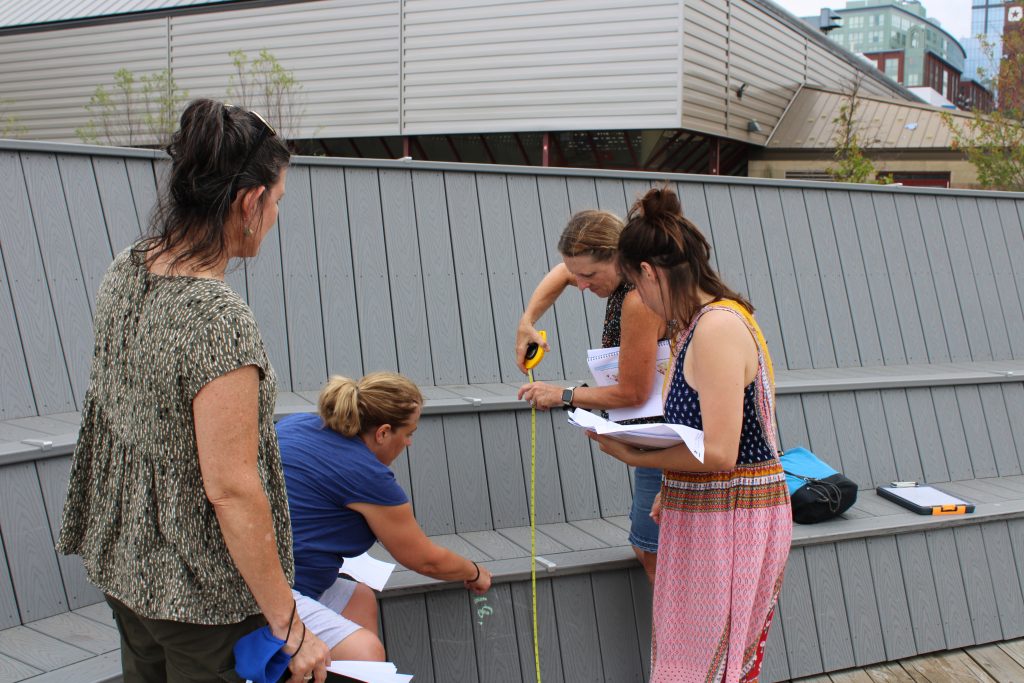
Tuesday, participants learned about Nature-based solutions with Emma Gildesgame of The Nature Conservancy and got their hands dirty with an interactive watershed model. Most of our participants hadn’t heard of nature-based solutions before, and were very excited to learn about this new and growing field of study. We then got to see an example of these climate resilient techniques in action at Coughlin Park with the Lab’s own Dr. Mark Borrelli and Bryan McCormack. It was a beautiful day at the (rocky) beach to learn about the importance of long term monitoring, how nature-based solutions can protect coastal communities like Winthrop, and try our hand at some intertidal biodiversity monitoring!
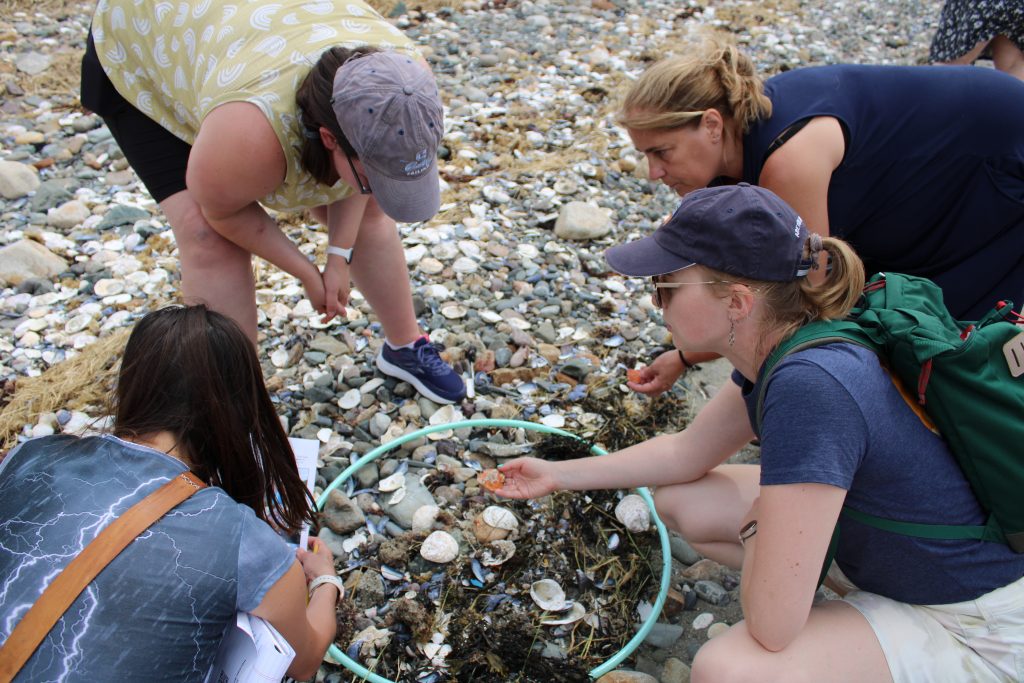
Our third day we headed into the harbor for our first island visit! We joined the Hill to Harbor Corps from National Parks of Boston on a trip to Peddocks Island. While the H2H crew led local YMCA youth in some hands-on activities, we took a walk with NPS Ranger Rachel Vincent to learn about citizen science monitoring apps. She showed us how to use iNaturalist and Nature’s Notebook to identify species and track seasonal change, and we brainstormed ways that these apps could be used in the classroom.
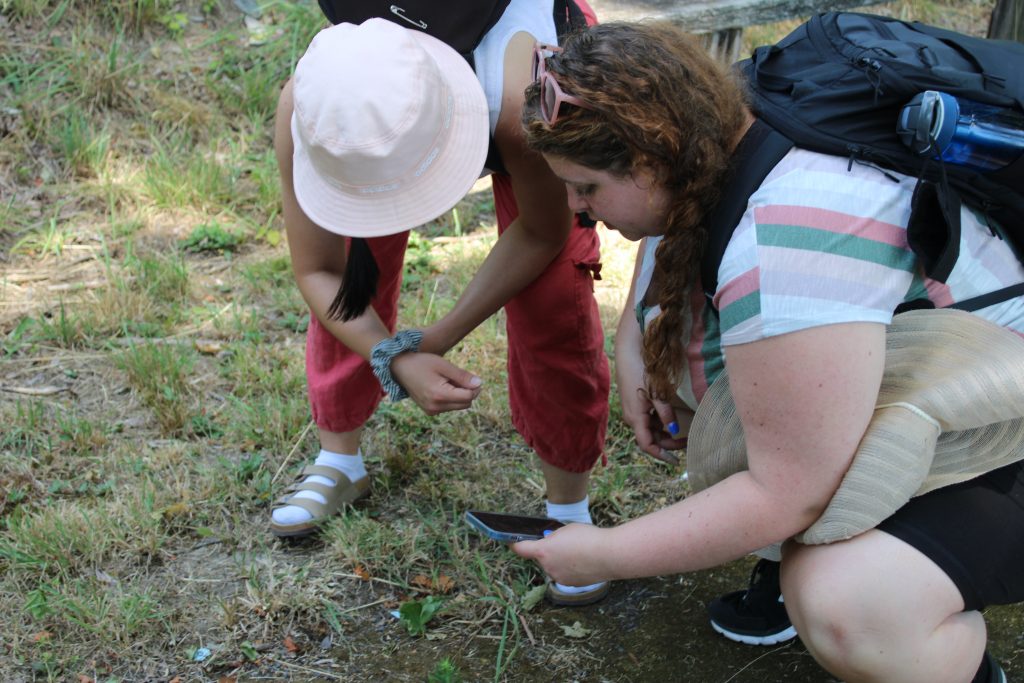
On Thursday we were back on the mainland – we heard from Dr. Colleen Hitchcock from Brandeis University about resources and ideas for bringing citizen science into the classroom. After lunch we took a short drive to Carson Beach in South Boston and met up with NPS Ranger Sarah Dickinson. Here we got to dip our feet in the water (a welcome reprieve on a hot day!) and experience beach-based scientific protocols. We learned about local molluscs through Bivalve Quest and measured slope with beach profiling techniques used by Lab scientists in 2021.
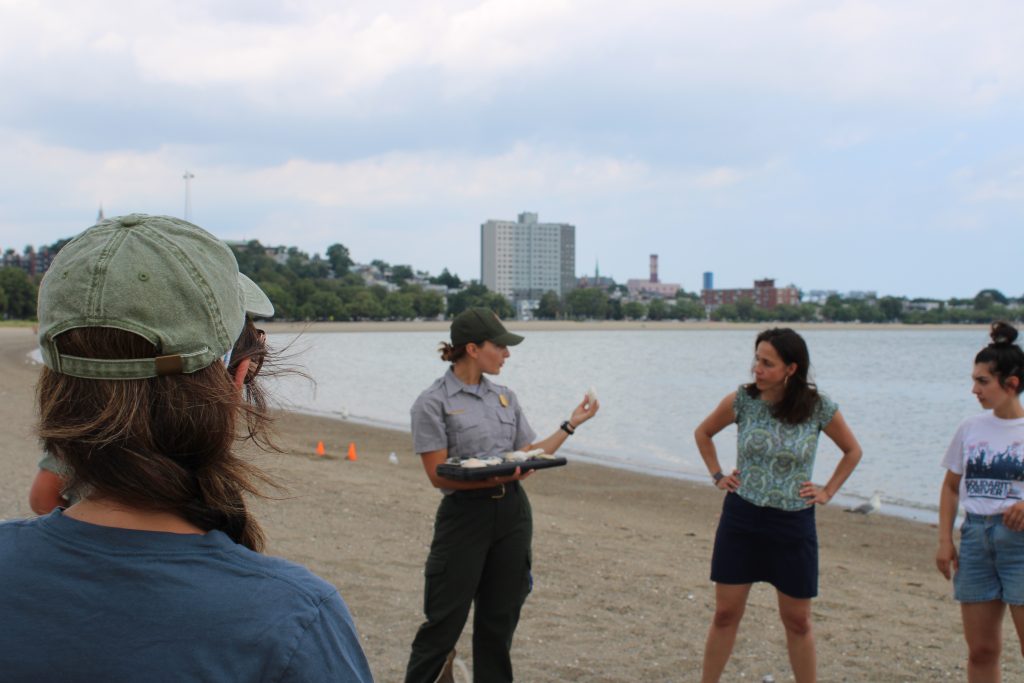
The time flew by, and on Friday we headed out to Spectacle Island for one last site visit and group activity. Elisabeth guided us to the South Drumlin of the island, sharing a brief history of the island and its rehabilitation as a public park. Our participants then got to flex their creative muscles by creating and demonstrating a model place-based activity – with the rest of the team serving as their “students.”
Our incredible week wrapped up with a special ceremony – our eight teachers were officially sworn in as Park Service Junior Rangers! They are now hard at work on developing their capstone lessons, which they will present to partners and collaborators later this fall. We can’t wait to see what ideas they come up with, and how the lessons they learned at the Institute will weave into these projects.
We are deeply grateful to our incredible participants who joined us this summer for our pilot institute! We learned so much from each and every one of you, and were thrilled to share Boston Harbor with you all. Stay tuned for updates about our participants and their new lesson plans, and we’re already planning next year’s course!
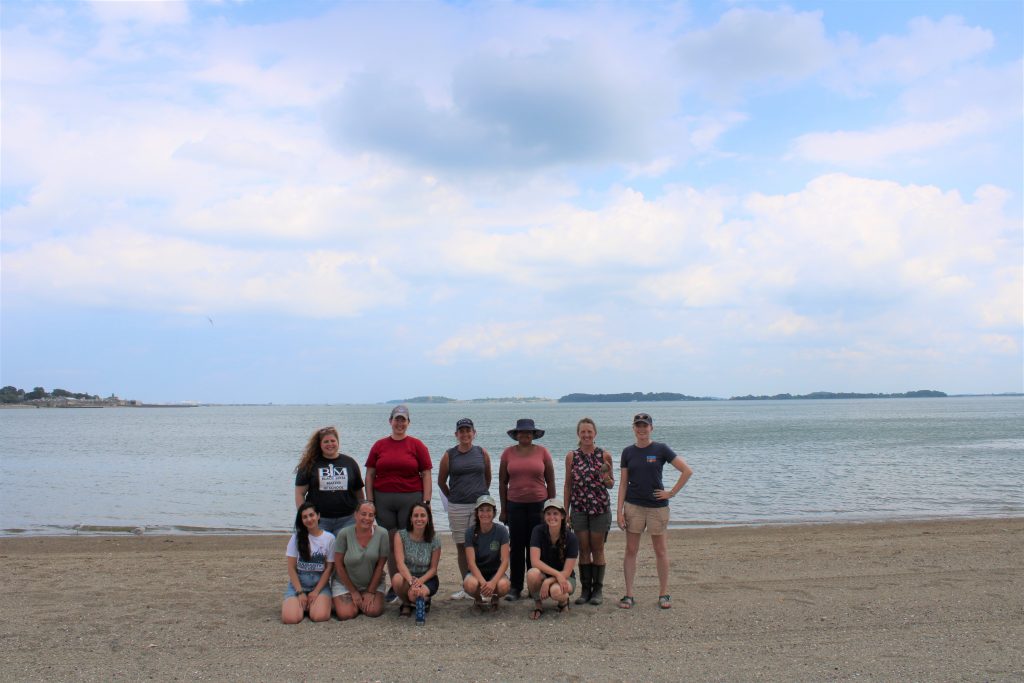
*The field of “citizen science” is undergoing a major shift regarding terminology to ensure that participants do not feel uncomfortable or excluded by the term “citizen.” We used this term during the course to distinguish it from true “community science,” a practice in which local communities are involved in all aspects of a project from creation, development, implementation, analysis, and communication. To find out more, please visit: https://citizenscience.org/2017/06/13/citizen-science-terminology-matters/